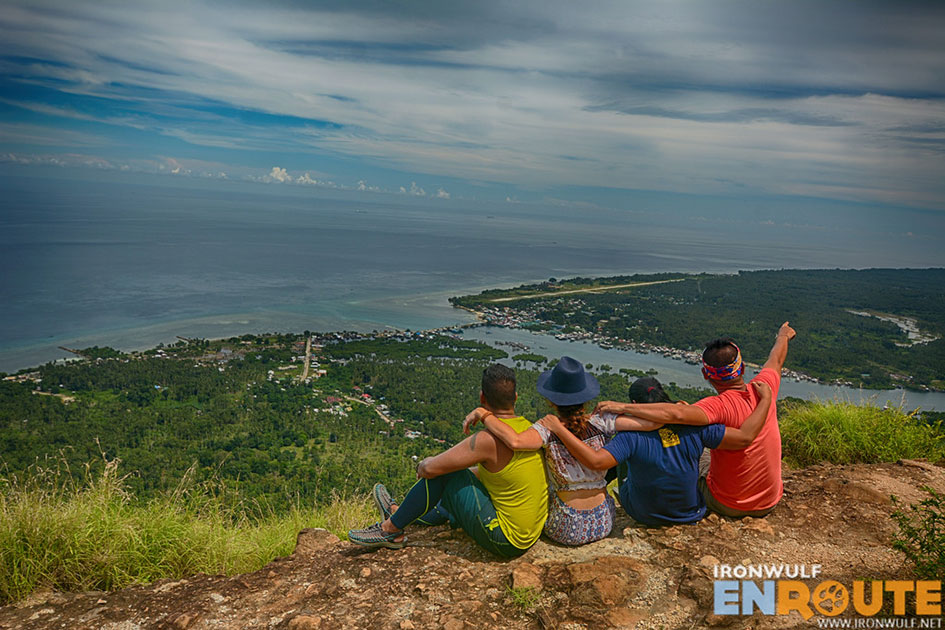
You could tell if a destination is gaining ground in terms of tourism when their infrastructure starts improving. During my recent visit to Tawi-tawi, I was able to climb Bud Bongao again. I certainly noticed a new building, paved stairways and other pleasing developments. It was eight years ago when I last climbed Bud Bongao. A time when there still a heavy stigma hovering over the province. But now that stigma is slowly lifting. People are learning that Bongao, Tawi-tawi is relatively safe which resulted to a three-fold increase in tourism arrivals just this year, 2017. At the forefront of the province’s tourism project is the Bud Bongao Eco-Tourism Park. A 342-meter high sacred mountain with an imposing presence at the center of the island.

Bud Bongao Eco-Tourism Park
Last 4th of July 2017, the Municipality of Bongao officially opened the Bud Bongao Eco-Tourism Park. The 56 million worth project made a 400 meter access road, newly constructed administrative building to welcome visitors, 1,890 concrete steps with strategic rest stops up towards the summit, and solar-powered lamp posts. It’s a big development from my last climb where we had to contend with some muddy trails up to the summit.

Rich Biodiversity
The Philippine macaques are the most prominent wildlife that can be seen and even interact at the Bud Bongao Eco-Tourism Park. They are out in the wild which is great. But one thing I noticed is they have tamed down. As I remember from my first climb that they can be quite aggressive before. I guess they just got used to people feeding them bananas during the climb.
Sharing space with the macaques in this 250-hectare eco-park are a multitude of flora and fauna. The threatened flora such as the pitogo, molave, dungon dao, amamali, spreading club moss, kalantas and bitanghol can be found here. The red dragonfly, orange albatross, monitor lizard, tabili, green snake, Tawi-tawi Forest Rat, brown rat, mangrove blue flycatcher, rofous paradise, red bellied pitta, and white vented whistler still roam in this forest considered to be the last of the remaining moist forest in Sulu Archipelago.

Sacred Grounds
Bud Bongao remains as one of the most visited pilgrimage site for Islams in Sulu. Legend has it, that one of the first followers of Arab merchant that introduced Islam in the Philippines, Sheik Karim-ul Makhdum, was buried at one of the “tampats (Muslim burial grounds)”. I shared about their practices here on my previous post. What I did notice where the forest looks cleaner now. It would seem they removed some of the plastic knots which were used as wishes. I thought them to be unsightly before. Instead of plastics, locals just tie knots using plant leaves.

Multi-Peaks
Bud Bongao is composed of several peaks. S1Expeditions identified the columns composing the whole Bud Bongao. There’s the Bongao, Sibutu, Simunul, Tambisan, Tinondakan and Pajar. No wonder there were different measurements before. It’s because there were several viewpoints. The main viewpoint is the Tambisan peak. The viewpoints also describe the sights can be seen from that point.

Climbing Bud Bongao
Exploring the Bud Bongao Eco-Tourism Park is a lot more convenient now with improved infrastructure in place. I like how organized the trail is and cleaner. While I like natural mud or ground trail, having established trails will keep visitors from venturing out. Here are some information when planning a climb.
- Climbing Bud Bongao is free
- Eco-park administration is strict on implementing leave no trace. Water bottles are counted before and after climb. Make sure to bring your trash as you go down.
- No restrooms on the trail, only at the admin building.
- Climb can take an average of an hour
- Bring plenty of water
- Bring bananas for the monkeys








Ferdz Decena is an award-winning travel photographer, writer and blogger. His works has found print in publications such as Singapore Airlines’s Silver Kris, Philippine Airlines’ Mabuhay, Cebu Pacific’s Smile and Seair InFlight. He has also lent his expertise to various organizations like the Oceana Philippines, Lopez Group Foundation, Save the Children and World Vision, contributing quality images for their marketing materials.
